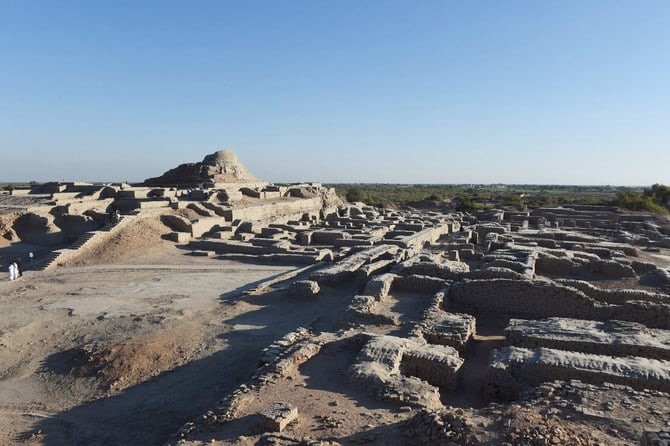PARIS: During this summer’s tragic floods in Pakistan, one of the world’s first cities came perilously close to being wiped off the map. Despite its survival, Mohenjo Daro has become a symbol of the threat that global warming poses to humanity’s cultural heritage.
Mohenjo Daro, built around 3,000 B.C. by the Indus civilization in modern-day South Asia, was not swept away by floods, most likely due to the genius of its designers.
The city, perched high above the Indus River, had a primitive drainage system and sewers, allowing much of the floodwaters to be evacuated.
According to World Weather Attribution, a network of researchers, nearly 1,600 Pakistanis died in the floods, which were “probably” exacerbated by global warming.
The ancient metropolis “could have vanished with all the archaeological traces,” according to Lazare Eloundou Assamo, director of UNESCO’s World Heritage program.
According to Assamo, the Pakistani site was “a victim” of climate change and is “very lucky” to still exist 100 years after it was discovered in 1922.
Fortunately, “the situation is not catastrophic” in Mohenjo Daro, according to Thierry Joffroy, a brick architecture specialist who visited the site on behalf of UNESCO.
Despite ground sinking in some areas and water damage to some structures, Joffroy believes the site “can be repaired.”
For the past 50 years, the Paris-based UNESCO has compiled a list of World Heritage sites, significant places deemed worthy of preservation, and this week marks the milestone in Greece.
“To protect this heritage ourselves… is to face the consequences of climate disruption and biodiversity loss.” “It’s the main threat… that we assess in a tangible way,” UNESCO Director Audrey Azoulay told the Delphi conference on Thursday.
“One site in five, and more than a third of natural sites, already see this threat as a reality,” she said of the country’s 1,154 World Heritage sites.
“We are seeing a lot more floods, hurricanes, cyclones, and typhoons,” said Rohit Jigyasu of the International Center for the Study of Cultural Property Conservation and Restoration (ICCROM).
“We have these climate-related disasters that are having a massive impact on sites like Mohenjo Daro,” he explained.
Huge forest fires have scorched Canada’s Rocky Mountains, a world heritage site, and this year flames came within 15 kilometers of Delphi as a heatwave exacerbates the severity of wildfires throughout the Mediterranean basin.
Meanwhile, landslides occurred this year near Machu Picchu in Peru’s Andes mountains.
Other, less obvious changes can have serious consequences.
Rising water temperatures are causing bleaching episodes on Australia’s protected Great Barrier Reef.
In Ghana, erosion has washed away a portion of Fort Prinzenstein, a historic slave trading post.
Source: AFP


